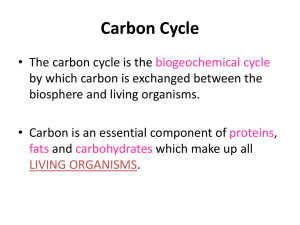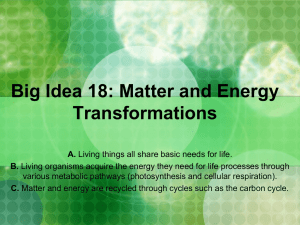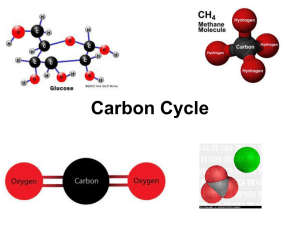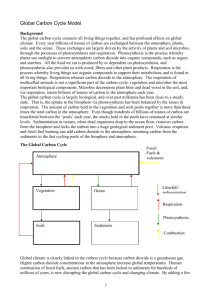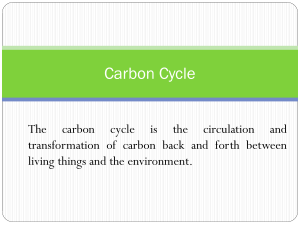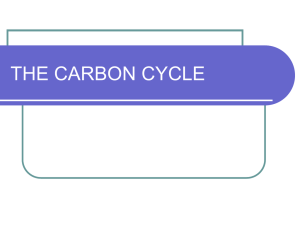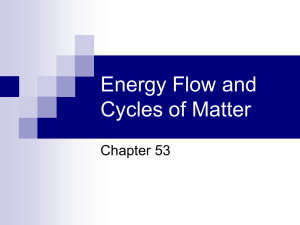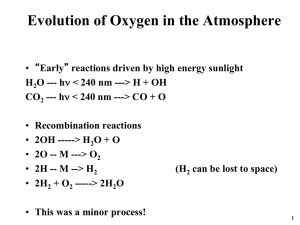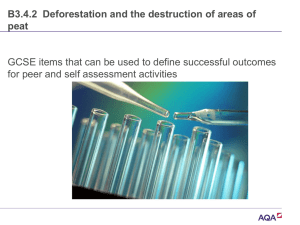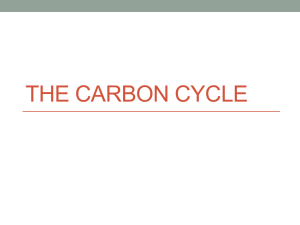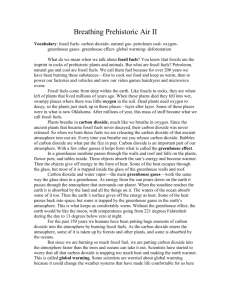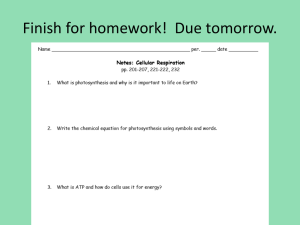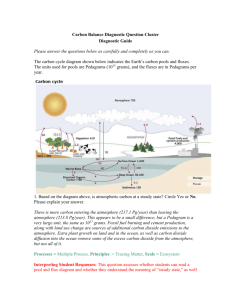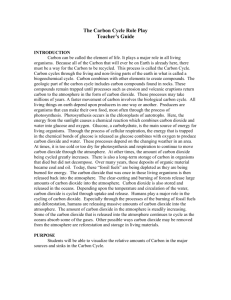Biomagnification
advertisement
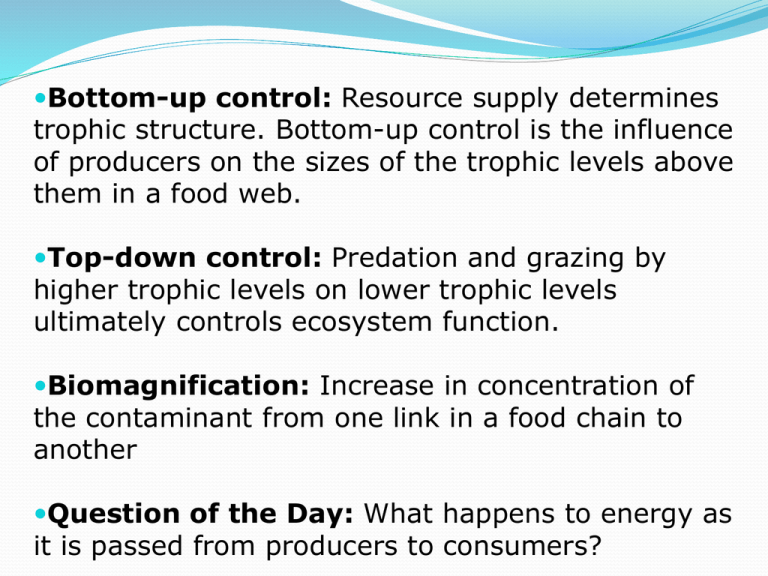
Bottom-up control: Resource supply determines trophic structure. Bottom-up control is the influence of producers on the sizes of the trophic levels above them in a food web. Top-down control: Predation and grazing by higher trophic levels on lower trophic levels ultimately controls ecosystem function. Biomagnification: Increase in concentration of the contaminant from one link in a food chain to another Question of the Day: What happens to energy as it is passed from producers to consumers? Bottom-up Control Top-down Control Biomagnification Biomagnification Populations of many predatory and fish-eating birds in the United States declined in the 1950s and 60s The causes of these population declines were traced to pollution of aquatic habitats by residues of DDT DDT is a pesticide that was used to control crop pests after World War II Biomagnification The pesticide’s residues resisted degradation and entered aquatic food chains DDT residues accumulated in the fatty tissues of animals and were concentrated with each step in the food chain The high doses consumed by predatory birds interfered with their physiology and reproduction, making their eggshells excessively thin and causing the deaths of embryos Breeding success declined, and populations followed Biomagnification DDT affected wildlife and non-target species The peregrine falcon was a sensitive indicator of the health of the environment How do chemicals cycle through an ecosystem? Carbon dioxide in the atmosphere Carbon dioxide in decaying matter Carbon dioxide in fossil fuels underground Plants use of carbon during photosynthesis Animals obtaining carbon from plants Animal respiration and plant respiration The carbon cycle is closely tied to the flow of energy through the biosphere Classes of processes cause carbon to cycle through ecosystems Photosynthesis and respiration Ocean-atmosphere exchange Deposition and burial, Volcanic release Global Carbon Cycle Photosynthesis and Respiration Photosynthesis and respiration are the main energy transforming reactions of life Photosynthesis is the conversion of light energy to chemical energy that is stored in glucose or other organic compounds Respiration is the use of oxygen to metabolize organic compounds and release chemical energy Photosynthesis and Respiration During photosynthesis, carbon gains electrons and is reduced, this is accompanied by a gain in chemical energy An equivalent amount of energy is released by respiration, which results in a loss of electrons and a loss of chemical energy Photosynthesis and Respiration About 85 billion metric tons (1 billion metric tons is a gigaton) of carbon will enter into these reactions each year There is something like 2,650 gigatons of total carbon in organic matter How is carbon extracted from the atmosphere? Carbon is extracted from the atmosphere through plants in a process called photosynthesis. What are ways in which carbon is released into the atmosphere? Carbon can be released into the atmosphere by animal respiration (when animals breathe out), by plant respiration, Ocean-atmosphere exchange Physical exchanges of carbon dioxide between the atmosphere and oceans, lakes, and streams Carbon dioxide dissolves readily in water The oceans contain about 50 times more carbon dioxide as the atmosphere does Carbon dioxide is continuously being exchanged across the boundary between the oceans and the atmosphere Ocean-atmosphere exchange Exchange across the air-water boundary links the carbon cycles of terrestrial and aquatic ecosystems The ocean is an important sink for the carbon dioxide produced by the burning of fossil fuels Deposition and burial In the atmosphere, atmospheric carbon dioxide reacts with water to form carbonic acid Carbonic acid will fall to the earth as rain and reacts with minerals at the earth’s surface Through the process of chemical weathering, carbonic acid will slowly dissolve these minerals into their component ions These component ions are carried in surface waters like streams and rivers eventually to the ocean Component ions precipitate out as minerals like calcite and through continued deposition and burial, this calcite sediment forms limestone Deposition and burial This cycle continues as subduction occurs As seafloor carbon is pushed deeper into the earth by tectonic forces, it heats up, this causes it to melt It then can rise back up to the surface, where it is released as CO2 and returned to the atmosphere. This return to the atmosphere can occur through volcanic eruptions Human Driven Carbon Flow Release of carbon from fossil fuels and land use change The rise in atmospheric CO2 leads to increase in global temperature Fossil Fuels were formed millions of years ago from plant or animal remains that were buried, compressed, and transformed into oil, coal, or natural gas The carbon is said to be "fixed" in place and is essentially locked out of the natural carbon cycle Human Driven Carbon Flow Humans intervene by burning the fossil fuels During combustion of fossil fuels, carbon dioxide and water molecules are released into the atmosphere What happens to the carbon in plants and animals when they die? They decay, and the carbon is released back into the ground. Some of the carbon gets buried far underground and will become fossil fuels after many millions of years. What is one way in which carbon is released into the atmosphere? Carbon can be released into the atmosphere when humans burn fossil fuels.
